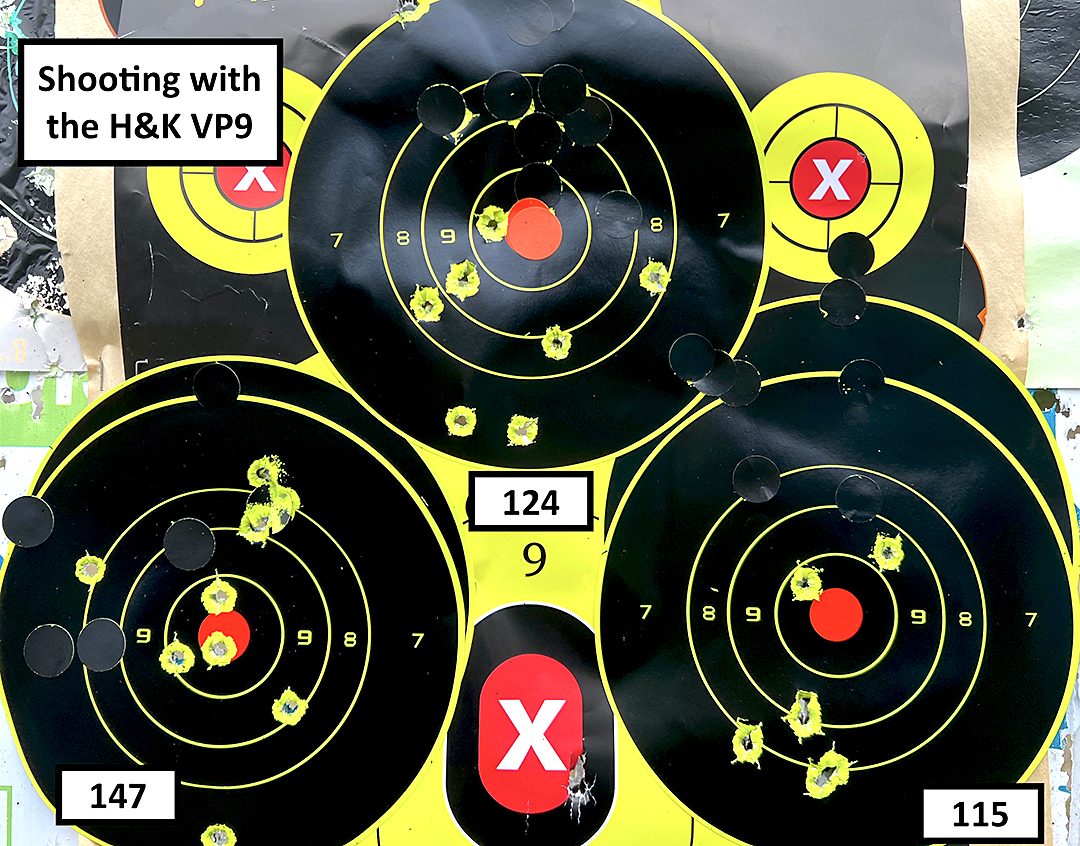The right 9mm round for your handgun

By MARJ LAW

Joe and I are at Bass Pro, looking at 9mm ammunition.
“Hey, aren’t you the little lady who writes for the paper about guns?” asks a guy who has been perusing the same shelves.
“Well, yes, thank you,” I reply, not quite certain how to respond.
“Finding 9mm bullets?” he asks.
“Yep.” Looks like we’re both pricing ammunition.
“Can’t do any better than these 115-grain bullets,” he advises, pulling a box away from the rest.
“You prefer 115s for your gun?” I ask.
“Can’t do wrong with them. They’re the best.”
“Why?” I wonder.
“Ever notice that if you can’t find any other bullets, you can usually find the 115-grain ones?” he asks. “That’s because people want them. Stores know to stock the best bullets.”
As he goes off, Joe and I pick up boxes of 115-grain, 124-grain and 147-grain rounds. The different numbers are the weight of the bullet within the round. The round is composed of two visible parts: a casing, which is often brass, and a projectile, which is the bullet.
Today, we plan to shoot two guns, comparing how well they do with different ammunition.
When we reach the Wakulla County Sheriff’s Office range, we sign in at the desk.
“What are you shooting today?” asks one of our friends who is a deputy there.
“We’re shooting the Springfield XDM competition model with a 5 1/4-inch barrel against a Heckler and Koch VP9 match gun with a 6-inch barrel. We want to see which ammunition the guns prefer.”
“It will depend on the gun,” he advises. “While some guns like one weight of ammunition, other guns shoot a tighter grouping with another weight.”
We’ve noticed this. Joe has a P226 Sig Sauer which he says does best with 147-grain rounds. A couple years ago, we had shot a few handguns. Those all had seemed to shoot best with 124-grain rounds. But that was a while ago and we’re ready to try again. Will both guns prefer the 124s?
To compare the XDM and the VP9, we agree to shoot four rounds each of the three different weights.
Let me just state that the XDM has a red dot on it. The VP9 has the original sights. Joe assures me that this will not affect the comparison.
“The accuracy of the weight of the bullets has to do with barrel, barrel length and the rifling; not sights. Accuracy with or without sights depends on the shooter. Not the gun.”
We put up three sticky-back targets and begin with the XDM.
Joe shoots his four 115 rounds into the right-hand target. Then I shoot my four into the same target.
The right target (115s) has scattered holes: none near the bullseye. One round has even hit the circle above the target we’ve placed! Three holes are tight at about 11 o’clock, and the other three are clearly visible against the black target. If we were afraid for our lives and shooting at Mr. Bad, yes, these would be good shots. But for target shooting? Not the best.
Now we’ve loaded the XDM with 124s and we’re aiming at the middle target. Better shooting!
One bullseye and six shots in the 8 and 9 rings. Where the 8th shot went, well, who knows? Must have been an “oops” shot. With control, however, the 124-grain bullets have a nice grouping close to the center of the target.
You can see five obvious holes in the 7, 8, and 9 rings of the left-hand target where we used 147-grain bullets. Less easy to see are three holes on the outer perimeter. While these holes were less scattered than on the 115 target, the results are much better on the 124 target than on this one.
The XDM likes the 124 grains best.
Does the VP9 prefer them too?
We call Cold! and walk down to the targets. Instead of putting up new ones (those sticky back targets get kind of expensive), we put black dots over the holes we’ve made.
Back with a Hot! range, we load the VP9 with 8 rounds: 4 for Joe and 4 for me.
With some imagination, you could argue that one bullet touches the x-ring on the 115 target. Barely. 6 other bullets have hit the target. If you look closely, 2 of the hits are doubles. The last one did make the x-ring. But not on the correct target. It’s on the big white x of the center backing!
In the 124 target in the high center, seven hits are scattered within the 7, 8 and 9 rings. The last hit is at about 11:00 on the perimeter of the target.
Last, the left target is for the 147 rounds. Two of the hits are in the center of the x-ring. One other is very close. The other 6 are on the target. The low one, at about 6:00, was probably an “oops.” What appears to be a cluster of 3 hits above the x-ring is actually 2: the black dot we covered a previous hole with was pushed off the target. Those are really 2 shots.
Bottom line is, the VP9 does better with the heavier 147-grain bullet. Groupings are tighter than with the other rounds.
“Well, Joe, is it the shooter or is it the gun that makes a difference in what round is best for a particular handgun?” I wonder.
“The overall tolerance of the barrel and its rifling makes a difference in how a gun handles the different rounds. Since we both found certain rounds to work better in each gun, then the answer doesn’t lie with the shooter. It lies with how the gun shoots a particular round,” he replies.
“In each case, if we had to shoot at someone coming to harm us,” I’m thinking, “then any of the rounds would be adequate. Except for one instance, they all hit within the 63/4” target.
But, if we’re going for straight accuracy, the Springfield XDM seems to prefer the 124-grain bullets while the VP9 does better with 147-grain bullets. Humph. Looks like I’ll be buying both 124 and 147s.
Unless, of course, they’re hard to find. Or significantly more expensive.
Then, I’d go to the 115s.”
Marj Law is the former director of Keep Wakulla County Beautiful who has become an avid shooter in retirement.
